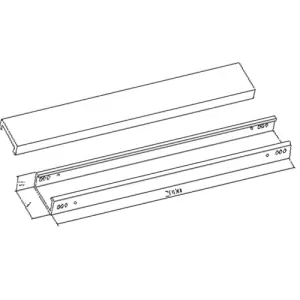Cable tray is an important piece of industrial equipment used to support and protect power, data, communication and control cables. Use cable trays to maximize the efficiency and safety of cable routing within a factory or building. Below is a detailed guide on how to use cable trays for maximum efficiency and safety:
1. Familiarize yourself with cable tray types: Learn about the different types of cable trays and their uses. Select the appropriate cable tray based on application scenarios and needs.
2. Determine the number and type of cables: Determine the number and types of cables that need to be supported and protected. This will help determine the size and type of cable tray required.
3. Select the correct cable tray specification: Selecting the correct cable tray specification is the key to ensure that the cable tray can carry the weight of the cable and meet the specified requirements. 
4. Install the correct size of support material: The correct size of support material should be selected according to the specifications and application scenarios of the selected cable tray. Note that different types of cable trays may use different support materials.
5. Correct positioning: During installation, it should be ensured that the positioning between the cable tray and the supporting structure is accurate, and the level and inclination are correct. This will ensure that the support structure does not slide down.
6. Use safety regulations: Many industries have specific safety regulations. These norms should be followed to ensure safety.
7. Periodic Inspection and Maintenance: Cable trays should be inspected regularly to ensure they are functioning properly and any issues requiring maintenance and repairs are properly addressed.
Through the above steps, cable trays can be effectively selected, installed and maintained to ensure maximum efficiency and safety of cable routing within a factory or building.
